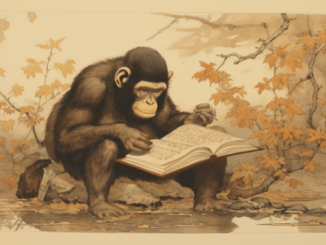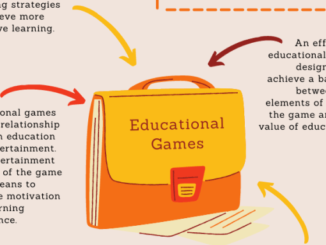
“Brainy Olympic games” and self-partnership. How these come into play when we turn our lives into fun games.
There is no human being on Earth who hasn’t experienced conflicting emotions inside themselves at least once in a while. And most of us experience them every day. Often in almost unrecognizable dimensions and situations and at times of the epic and intimidating scale.
The internal struggles
We doubt, criticize, and defend ourselves in our thoughts. We are fearing and courageous, if not simultaneously then often in close succession.
Each of us can find both of these two persons and more:
“One who would throw caution to the winds, another who would worry endlessly.”
— Nora Roberts, Daring to Dream (Dream Trilogy Book 1)
Here is what a well-known American brain researcher, Jill Bolte Taylor, who experienced a stroke and shared her experiences shortly before, during, and afterward in her acclaimed book My Stroke of Insight: A Brain Scientist’s Personal Journey, wrote in this respect:
“It appears that many of us struggle regularly with polar opposite characters holding court inside our heads. In fact, just about everyone I speak with is keenly aware that they have conflicting parts of their personality.”
— Jill Bolte Taylor, My Stroke of Insight: A Brain Scientist’s Personal Journey
And a little later in the same paragraph, she wrote,
“Many of us speak about how our head (left hemisphere) is telling us to do one thing while our heart (right hemisphere) is telling us to do the exact opposite. Some of us distinguish between what we think (left hemisphere) and what we feel (right hemisphere).”
Before reading the quote above for the first time, I often thought about how far apart these conflicting parts are situated inside of me. Ultimately, my heart is around the center of my body, and my head is on top of it. But reading this made me aware that the same entity of myself generated my thoughts and emotions.
Whatever side and color these thoughts and emotions took — ambitious or cautious, joyous or skeptical, optimistic or pessimistic, enthusiastic or procrastinating, pressing on the gas pedal or pulling on the brakes — they were communicated or set off in the same space inside me, my brain.
“Brainy Olympic Games”

The above epiphany was very inspiring and enlightening. I discovered the quotes above in the first couple of years of turning my life into fun games. That was when I realized that by designing and playing my self-motivational games, I was organizing something I started thinking of as the “brainy Olympic Games.”
In my first self-motivational game, which I called the 5 Minute Perseverance Game, I pursued a project or activity of my choice (for me, it started with writing one of my books) for five minutes a day for a month and recorded my score after each game session.
Get the 5 Minute Perseverance Game on Amazon
If I managed to write for at least five minutes on any given day, the enthusiastic and driving part of me got the point, and if I didn’t, the point went to my procrastinating self. If I did something, but in less than five minutes, these two parts of me shared a point. At the end of the month, I checked which part of me won that monthly round.
Competitive and collaborative games for ourselves
So you could say the ambitious part of me competed with the procrastinating one. That means the 5 Minute Perseverance Game, along with many other self-motivational games I created for myself, is a competitive game.
A competitive game is “[a] game with two or more players and a single winner.” — Geoffrey Engelstein and Isaac Shalev, Building Blocks of Tabletop Game Design: An Encyclopedia of Mechanisms
Building Blocks of Tabletop Game Design is available on Amazon
It might seem that there is only one winner in this game, and there is. But none of my self-motivational games remain static. I adjust their design as my experience and preferences change, remembering that:
“the destiny of games is to become boring, not to be fun. Those of us who want games to be fun are fighting a losing battle against the human brain because fun is a process and routine is its destination.” — Raph Koster, Theory of Fun for Game Design
Theory of Fun for Game Design is available on Amazon
In the process of designing games for myself, I realized that this activity of turning my life into fun games is a game in itself with a specific gameplay loop involving awareness, moving one tiny, effortless step at a time, and taking and appreciating this step in fun, playful, and gameful ways.
So the designing activity in itself is a game too. And this game is a collaborative one:
In a cooperative game,
“[p]layers coordinate their actions to achieve a common win condition or conditions. Players all win or lose the game together.” — Geoffrey Engelstein and Isaac Shalev, Building Blocks of Tabletop Game Design: An Encyclopedia of Mechanisms
Building Blocks of Tabletop Games Design is available on Amazon
Takeaways
When we turn our lives into fun games, we adjust the design of whatever we are up to so that it feels like an exciting and enjoyable game. That is why I call the result of turning life into fun games a self-motivational game. The motivation is available on tap in the process of their gameplay and development.
We are both the designers and the players of these self-motivational games. We pay attention to our own emotions and adjust when something doesn’t or stops working in such a way that we want to engage and play again. Or we find or design a new game — be it one in a traditional sense or a real-life one — to engage in.
This partnership between the players and designers in ourselves is one of the best kinds of self-partnership there can be, and it turns the process of turning life into fun games into a collaborative game, in which all parts of us win.
Thus, the paradox of this collaborative and competitive duality of turning life into fun games doesn’t come from the fact that various parts of us both compete and collaborate in the games we create, but from the fact that there are no losers against the popular belief and self-doubt. We often consider ourselves losers, but we are not. We are winners, even when we don’t see it that way.
And this win-win situation becomes more than apparent when you become aware of your powers of being both your life’s player and designer.
- The Collaborative-Competitive Paradox of Self-Gamification - 14th January 2022
- Self-Gamification and the Core Gameplay Loops - 21st August 2020
- What playing games and turning life into games can teach us? - 17th April 2020





Be the first to comment